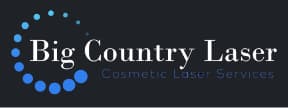The Role of Q-Switched Nd:YAG Laser in Treating Nail Fungus
A Safer Alternative to Oral Medications – Q-Switched Nd:YAG Laser vs. Oral Antifungal Medications
Nail fungus, or onychomycosis, is a common condition that can cause thickened, discolored, and brittle nails. Traditionally, treatment options have been limited to topical antifungals or oral medications like terbinafine and itraconazole. While oral antifungals are often effective, they come with potential side effects, including the risk of liver damage.
This has led many clients and clinicians to explore alternative treatment methods, such as laser therapy. The Q-switched Nd:YAG laser has emerged as a promising option, offering significant benefits over traditional medication-based approaches.
How the Q-Switched Nd:YAG Laser Works
The Q-switched Nd:YAG laser emits energy in short pulses that penetrate the nail and surrounding tissue. Its 1064 nm wavelength effectively targets fungal cells without damaging the surrounding healthy tissue. The laser’s energy generates heat, which disrupts the fungal cell walls, leading to their destruction.
Unlike topical treatments that struggle to penetrate the nail plate or systemic medications that affect the entire body, the laser delivers its effects precisely where they are needed: the infected nail and the nail bed.
Benefits of Using the Q-Switched Nd:YAG Laser
- Non-Invasive and Safe
- The Q-switched Nd:YAG laser treatment is non-invasive and does not involve any incisions or chemical exposure.
- Unlike oral antifungal medications, it avoids systemic absorption, eliminating the risk of liver damage or other systemic side effects.
- High Efficacy
- Clinical studies have shown that Q-switched Nd:YAG lasers can significantly reduce fungal infections and improve nail appearance over time. Results can often be observed after a few sessions.
- Minimal Side Effects
- Clients typically experience no downtime after treatment.
- Common side effects, such as mild redness or warmth in the treated area, are temporary and resolve quickly.
- Fast and Convenient
- A laser session usually takes about 10–30 minutes, depending on the number of nails being treated.
- Clients can resume normal activities immediately after the procedure.
- No Drug Interactions
- For clients already taking other medications, the laser treatment poses no risk of interactions, making it suitable for individuals with complex medical histories.
- Improved Compliance
- Unlike oral or topical medications that require weeks or months of consistent use, laser therapy involves a few short sessions, making it easier for clients to complete their treatment.
Have you been diagnosed with or affected by nail fungus? This amazing technology is available in Abilene, Texas at Big Country Laser Center. Call us or book online for a consultation! 325-721-5542
📍 Location: 5200 Buffalo Gap Rd, Bldg F, Abilene, TX 79606
📞 Phone: 325.721.5542

